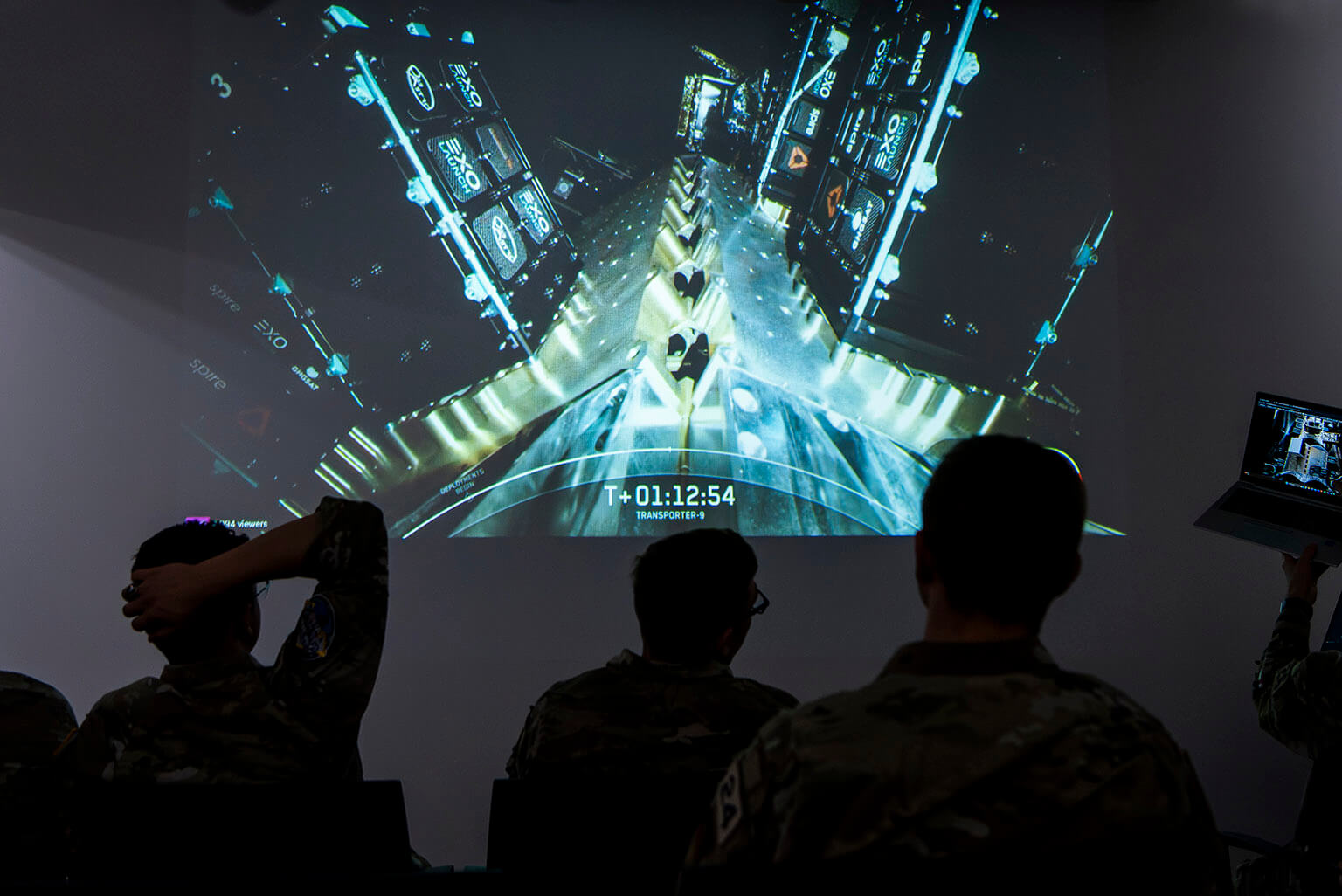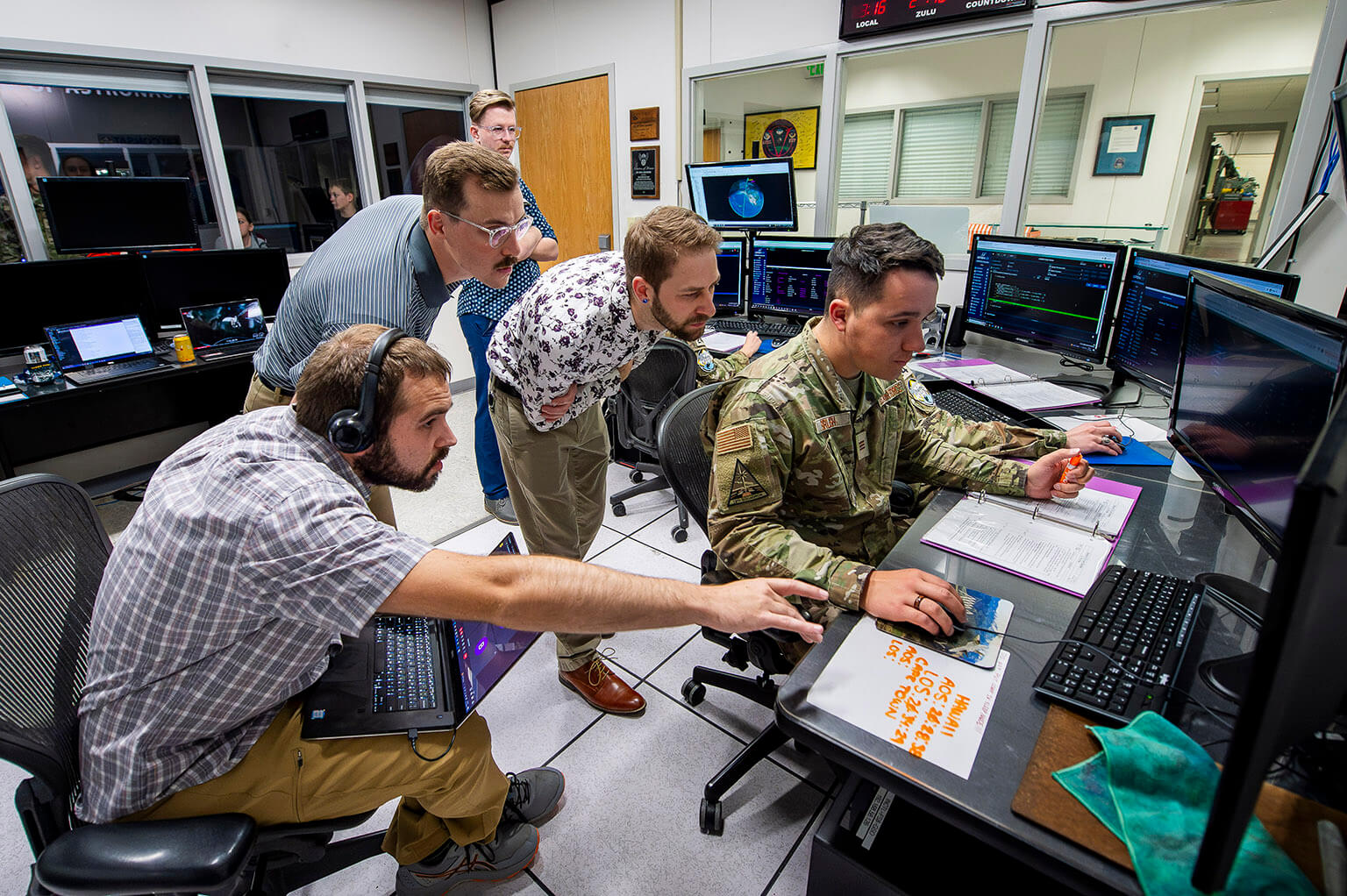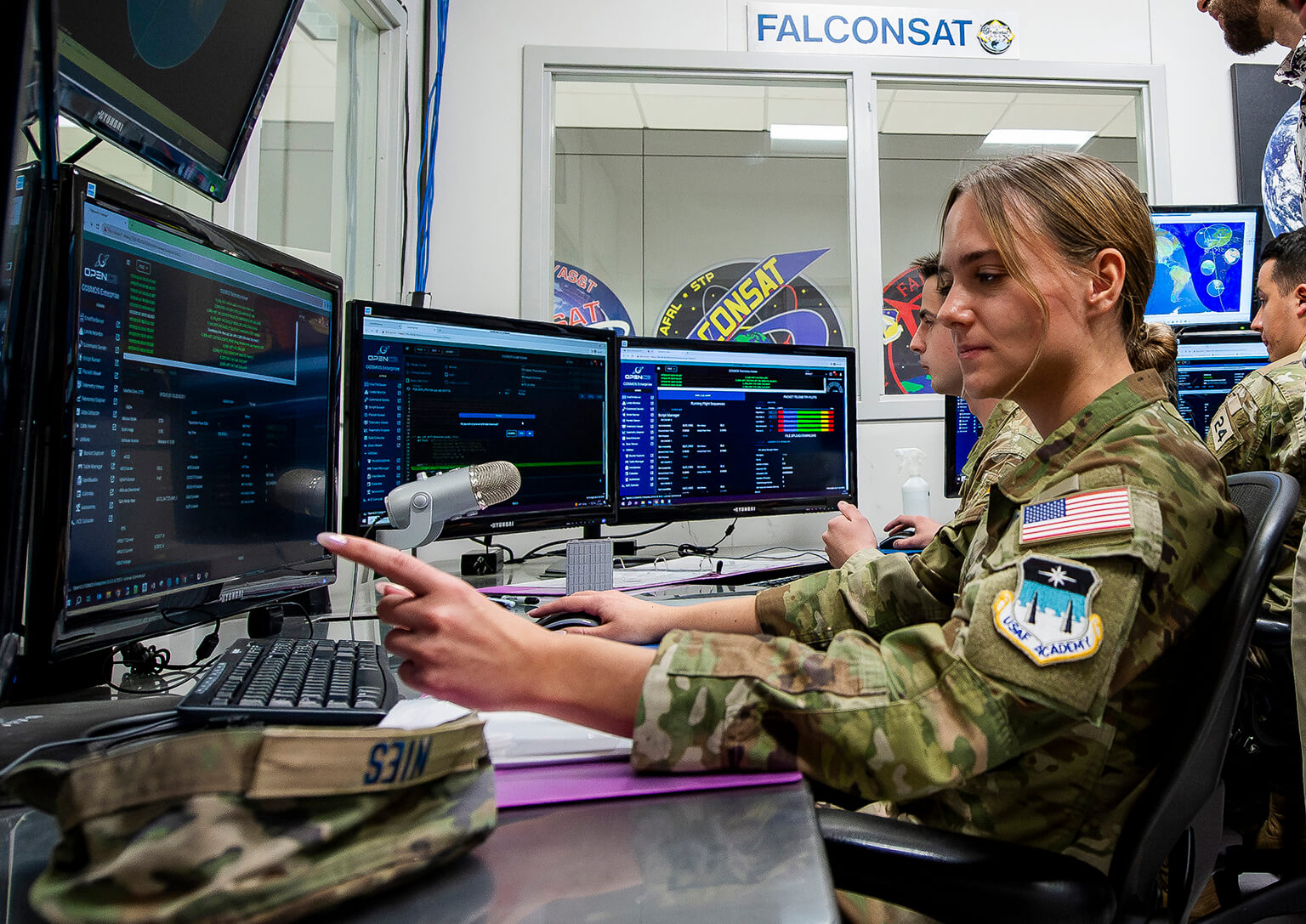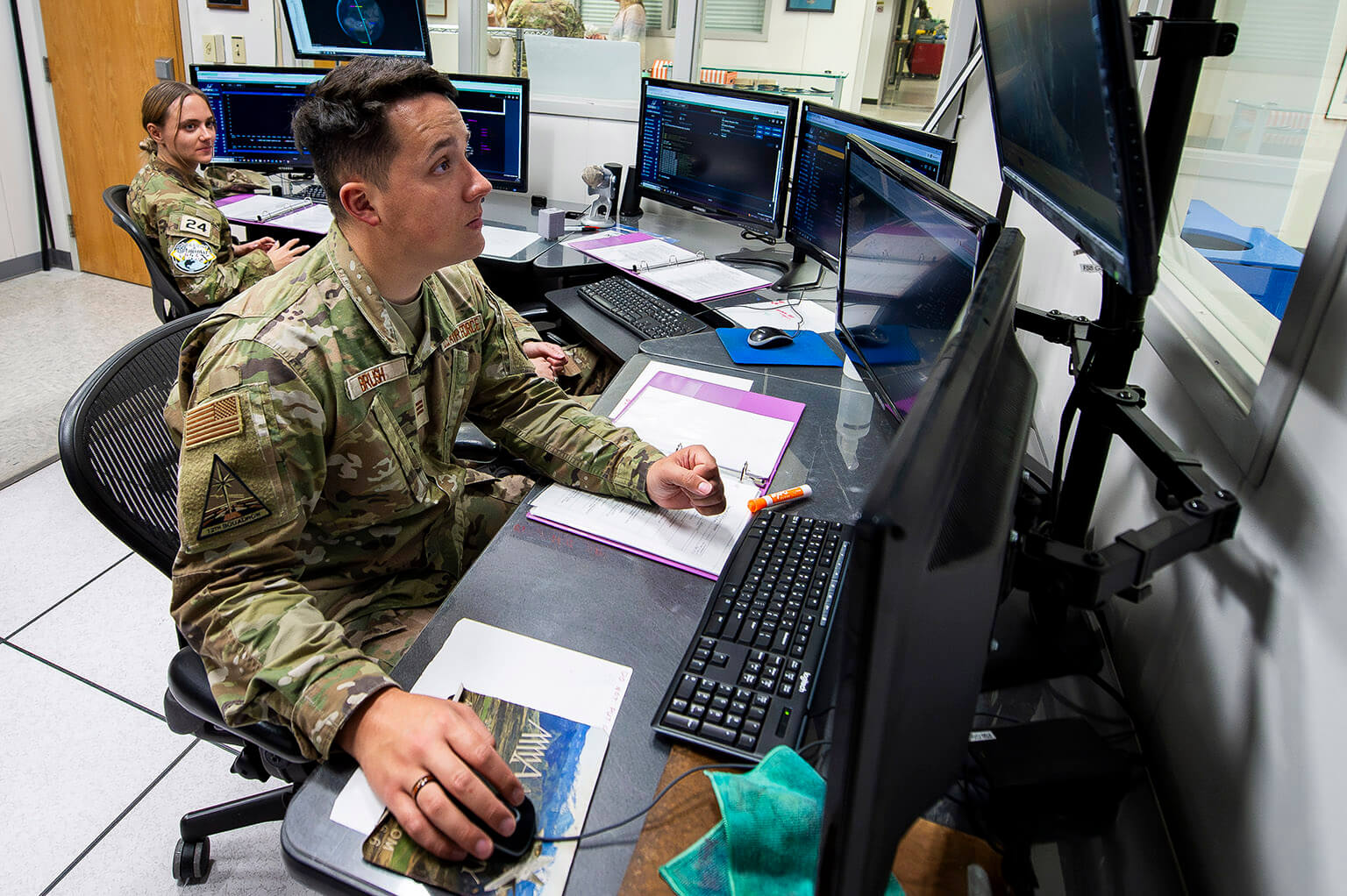Cadet-built satellite launches into space
 Cadets watch the deployment of FalconSAT-X on SpaceX’s Falcon 9 from the Department of Astronautics Space Systems Research Center. The satellite launched at Vandenberg Space Force Base, California, Nov. 11, 2023. (U.S. Air Force photo by Justin Pacheco)
Cadets watch the deployment of FalconSAT-X on SpaceX’s Falcon 9 from the Department of Astronautics Space Systems Research Center. The satellite launched at Vandenberg Space Force Base, California, Nov. 11, 2023. (U.S. Air Force photo by Justin Pacheco)
By Randy Roughton
U.S. Air Force Academy Strategic Communications
U.S. AIR FORCE ACADEMY, Colo.- U.S. Air Force Academy cadets celebrated as they watched the launch of the FalconSAT-X satellite from the Department of Astronautics Space Systems Research Center Nov. 11. FalconSAT-X launched from SpaceX’s Falcon 9 mission at Vandenberg Space Force Base, California.
Learn space by doing space
Seniors from each Academy class since 2019 worked on FalconSAT-X. In the U.S. Air Force Academy Department of Astronautics FalconSAT program, cadets learn space by doing space through real-world satellite development and operations.
Cadets design, analyze, build, test and operate small satellites hosting technology experiments funded by the Air Force Research Laboratory. The Cadet Space Operations Squadron conducts daily operations for on-orbit FalconSATs. Their testing is the space equivalent to flight testing, said Cadet 1st Class Parker Brush.
“It is similar to the Space Force in that we are very thorough with our testing,” Brush said. “When creating the satellites, we have different methods that we go through, which are very similar to the way the big Air Force does their testing through, not just satellites but also parts when creating a new airplane frame model.”
 Engineers (from left) Braden Virdell, Seth Hart, Zane Sauer and Jack Hallowell watch U.S. Air Force Academy Cadet 1st Class Parker Brush operate FalconSAT-X from the Department of Astronautics Space Systems Research Center after its launch on SpaceX’s Falcon 9. The satellite launched at Vandenberg Space Force Base, California, Nov. 11, 2023. (U.S. Air Force photo by Justin Pacheco)
Engineers (from left) Braden Virdell, Seth Hart, Zane Sauer and Jack Hallowell watch U.S. Air Force Academy Cadet 1st Class Parker Brush operate FalconSAT-X from the Department of Astronautics Space Systems Research Center after its launch on SpaceX’s Falcon 9. The satellite launched at Vandenberg Space Force Base, California, Nov. 11, 2023. (U.S. Air Force photo by Justin Pacheco)
Initial Contact Team
Brush and Cadets 1st Class Ashley Nies and Garrett Siemen form the squadron’s Initial Contact Team. About an hour after the launch, the team connects a data link to ensure that the spacecraft’s systems, from control to communications, are functioning well, Siemen said.
“The second it launches, we watched it and had a grand old time,” he said. “Then, we sprinted down and get on the computer to make contact and get data moving between us and the satellite.”
On Oct. 24, 1997, the Department of Astronautics launched its first orbiting spacecraft, Falcon Gold, on an Atlas rocket. The Academy later launched seven additional satellites before FalconSAT-X.
A trio of satellites in space
The FalconSAT program aims to develop and operate small satellites that support various scientific and technological experiments. These micro-satellites are approximately 24x28x38 inches with a maximum weight of 395 pounds. The satellites conduct meaningful experiments and collect valuable data. Most recently, FalconSAT-6 launched in 2018, followed by FalconSAT-8 in 2020. Cadets continue to operate both satellites.
“The entire purpose of FalconSAT is to be the test bed for different places to get their parts up in space to see if they will work,” Brush said. “When talking with us, [space industry] companies send up parts to see if they will work and how they will work in space. That is what we have been doing for almost every one of our satellites.”
 U.S. Air Force Academy Cadet 1st Class Ashley Nies, an initial contact team member, operates FalconSAT-X from the Department of Astronautics Space Systems Research Center after its launch on SpaceX’s Falcon 9. The satellite launched at Vandenberg Space Force Base, California, Nov. 11, 2023. (U.S. Air Force photo by Justin Pacheco)
U.S. Air Force Academy Cadet 1st Class Ashley Nies, an initial contact team member, operates FalconSAT-X from the Department of Astronautics Space Systems Research Center after its launch on SpaceX’s Falcon 9. The satellite launched at Vandenberg Space Force Base, California, Nov. 11, 2023. (U.S. Air Force photo by Justin Pacheco)
Another benefit of the program is the experience it is gives future U.S. Air Force and U.S. Space Force officers. For example, Nies gains experience operating a satellite a year before she begins space operator training.
Cadets training cadets
Approximately 50 cadets majoring in STEM disciplines perform satellite design, development, and testing as part of their senior engineering capstone course. An additional 75-100, representing all class years and majors, operate the spacecraft as part of the Cadet Space Operations Squadron. The squadron operates like the Airmanship program, with cadets training cadets.
“This is a real-world spacecraft program,” said Lt. Col. Dan Showalter, Space Systems Research Center director. “The cadets perform work similar to young [U.S. Space Force] officers and engineers in the industry.”
Through the years, the program’s satellites conducted a wide range of experiments, including studying Earth’s upper atmosphere, testing new communication technologies, and investigating the effects of space radiation on electronic components.
Building on the work of previous classes
The three cadets who handled FalconSAT-X’s initial contact were high school juniors when the program began in 2019. Now, Brush is looking forward to an Air Force piloting career, while Nies and Siemen have their futures in the U.S. Space Force. Each cadet remains amazed at their opportunity to build off the work conducted by seniors in the last four classes.
“It’s crazy that they have been working on this for four years, and we got to be the people who are operating it and be a part of the launch,” Nies said. “It is important. They have put a lot of time into FalconSAT-X.”
Even before FalconSAT launched into orbit, cadets were already working on the next spacecraft, FalconSAT-Xtra.
Learn more about the Academy’s space program.
 U.S. Air Force Academy Cadet 1st Class Ashley Nies (back) and Cadet 1st Class Parker Brush (front), part of the three-cadet initial contact team, operates FalconSAT-X from the Department of Astronautics Space Systems Research Center after its launch on SpaceX’s Falcon 9. The satellite launched at Vandenberg Space Force Base, California, Nov. 11, 2023. (U.S. Air Force photo by Justin Pacheco)
U.S. Air Force Academy Cadet 1st Class Ashley Nies (back) and Cadet 1st Class Parker Brush (front), part of the three-cadet initial contact team, operates FalconSAT-X from the Department of Astronautics Space Systems Research Center after its launch on SpaceX’s Falcon 9. The satellite launched at Vandenberg Space Force Base, California, Nov. 11, 2023. (U.S. Air Force photo by Justin Pacheco)